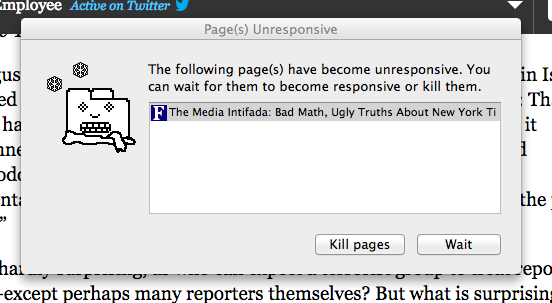I followed a link to an article on Forbes’ web site1. After a few moments the computer fan started to spin like a merry-go-round and the page, and the browser in general became virtually unresponsive.
I copied the url, closed the browser tab (Firefox) and pasted the link into Chrome, as Chrome is often billed for its stability and resilience to badly behaving web pages. After a few moments the same thing happened, roaring fan, and, when I peeked at the Activity Monitor, Chrome was eating more than a core worth of the machine’s CPU.

I dug a little deeper and peeked at the web inspector. Network activity was haywire hundreds and hundreds of downloads, most were small, some just a few hundred bytes, others a few Kb, but loads of them. I watched mesmerised. Eventually it began to level off after about 10 minutes when the total number of downloads was nearing 1700 and 8Mb total download.
It is clear that the majority of these are ‘beacons’, ‘web bugs’, ‘trackers’, tiny single pixel images used by various advertising, trend analysis and web analytics companies. The early beacons were simple gifs, so would download once and simply tell the company what page you were on, and hence using this to tune future advertising, etc.
However, rather than simply images that download once, clearly many of the current beacons are small scripts that then go on to download larger scripts. The scripts they download then periodically poll back to the server. Not only can they tell their originating server that you visited the page, but also how long you stayed there. The last url on the screenshot above is one of these report backs rather than the initial download; notice it telling the server what the url of the current page is.
Some years ago I recall seeing a graphic showing how many of these beacons common ‘quality’ sites contained – note this is Forbes. I recall several had between one and two hundred on a single page. I’m not sure the actual count here as each beacon seems to create very many hits, but certainly enough to create 1700 downloads in 10 minutes. The chief culprits, in terms of volume, seemed to be two companies I’d not heard of before SimpleReach2 and Realtime3, but I also saw Google, Doubleclick and others.
While I was not surprised that these existed, the sheer volume of activity did shock me, consuming more bandwidth than the original web page – no wonder your data allowance disappears so fast on a mobile!
In addition the size of the JavaScript downloads suggests that there are doing more than merely report “page active”, I’m guessing tracking scroll location, mouse movement, hover time … enough to eat a whole core of CPU.
I left the browser window and when I returned, around an hour later, the activity had slowed down, and only a couple of the sites were still actively polling. The total bandwidth had climbed another 700Kb, so around 10Kb/minute – again think about mobile data allowance, this is a web page that is just sitting there.
When I peeked at the activity monitor Chrome had three highly active processes, between them consuming 2 cores worth of CPU! Again all on a web page that is just sitting there. Not only are these web beacons spying on your every move, but they are badly written to boot, costuming vast amounts of CPU when there is nothing happening.
I tried to scroll the page and then, surprise, surprise:

So, I will avoid links to Forbes in future, not because I respect my privacy; I already know I am tracked and tracked; who needed Snowdon to tell you that? I won’t go because the beacons make the site unusable.
I’m guessing this is partly because the network here on Tiree is slow. It does not take 10 minutes to download 8Mb, but the vast numbers of small requests interact badly with the network characteristics. However, this is merely exposing what would otherwise be hidden: the vast ratio between useful web page and tracking software, and just how badly written the latter is.
Come on Forbes, if you are going to allow spies to pay to use your web site, at least ask them to employ some competent coders.
